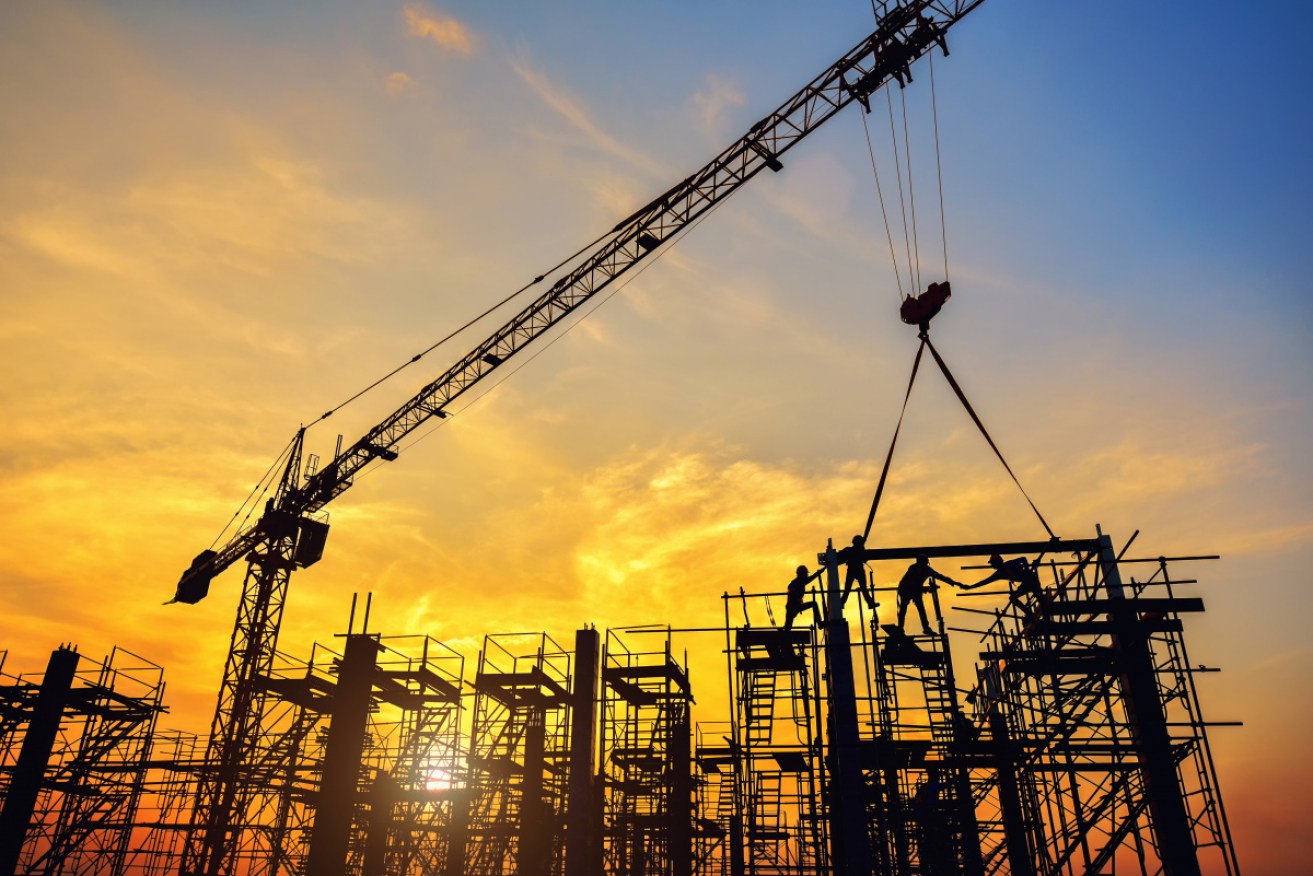Construction downturn means big job losses but brings the heat back into the market: Economists


The slowing of supply in the construction industry and the expected boost in demand is expected to raise property prices. Photo: Getty
Construction workers are facing further job losses as the property market bottoms out sooner than expected, but a likely bump in house prices is predicted by the end of 2019.
The construction industry’s woes deepened in April as approvals of new homes dropped by a seasonally adjusted 4.7 per cent.
The fall to 14,123 seasonally adjusted approvals fell just below that of March, in which 14,429 dwellings were approved, but a huge decline from the 17,083 recorded in February.
The approvals for private sector houses dropped by 2.6 per cent while the “other dwellings” category, which includes apartment blocks and townhouses, dipped 6.5 per cent, the Australian Bureau of Statistics revealed on Thursday.

Residential buildings by type. Photo: ABS/ANZ
While the continued drop in construction has been painful for the building industry, HSBC chief economist Paul Bloxham predicted it will bring some heat back into the property market.
“In terms of prices, the expected pullback in construction should be somewhat supportive because it means less supply in the future. In the face of growing demand that should actually help to stabilise house prices,” he told The New Daily.
The property market slump will hit bottom in the second half of this year, with home prices likely to start picking up in early 2020, according to Mr Bloxham’s forecasts.
On Wednesday, J.P. Morgan made the bold forecast that the RBA will slash Australia’s cash rate to just 0.5 per cent, through a series of four cuts by the middle of next year.
The possible cut, coupled with the Australian Prudential Regulation Authority (APRA) proposing that the rule that banks use a minimum 7 per cent interest rate be scrapped, would result in more loans taken in the market, Mr Bloxham said.
Tweet from @PeteWargent
“The main thing we’re looking at in terms of supporting house prices is that we expect the RBA to cut rates and we’ve also seen a loosening of prudential measures,” he said.
“Those factors, combined with the first-home buyers grant, means that we think they’ll collectively supply support for demand.”
But it could be bad news for renters, with prices predicted to spike because of the increase in demand and lower supply, said Angie Zigomanis of BIS Oxford Economics.
“The first things is rents will rise. Vacancy rates are tightened, so you’ll see growth in terms of rents and that in turn will pull buyers back into the market, which will pull developers back in,” he said.
“It’s not like the banks are going to open their wallets and throw money at people at the same rate they did five years ago, so I don’t think we’ll see a big rebound in prices. But you might see some modest growth come through next year.”
Housing Industry Australia chief economist Tim Reardon said it takes three months for most buyers to trust that prices are bouncing back before they enter the market.
“What we know from previous cycles is that we’ll get three months of house prices growth and then [buyers will] return in a flurry and that’s what we anticipate will happen in this cycle,” Mr Reardon said.
The correction we needed to have?
While the end of the price downturn may be in sight, there’s still some pain in store for the construction industry and for many that means job losses.
“Around the peak of the boom we were pushing to 20,000 approvals per month but it’s now under 15,000, so quite a big slowdown,” said Pete Wargent, co-founder of property investment advisory firm Allen Wargent.
“There’s 10 per cent of the labour force employed by construction – that’s a 150-year high – so it was always going to come down but about 750,000 people are directly employed by the residential construction industry.

There’s still some pain in store for the construction industry. Photo: Getty
“It’s got to hurt and that means job losses, which have already started. It’s probably one reason the economy is soft.”
While the sector was hit hard last quarter, with the value of work done down 2.5 per cent, it was the correction the industry needed to have, Mr Reardon said.
“In the past five years we’ve had such elevated rates of growth, it is now turning to an equilibrium,” he said.
“The background is that it took 20 years of mismanagement – where there weren’t enough apartments being built in Sydney and Melbourne – to lead to the rapid house price boom. Now it’s over, we’re returning to normal.
“It’s painful for the building industry. It’s a particularly sharp downfall and it is having a wider impact on the economy.”








